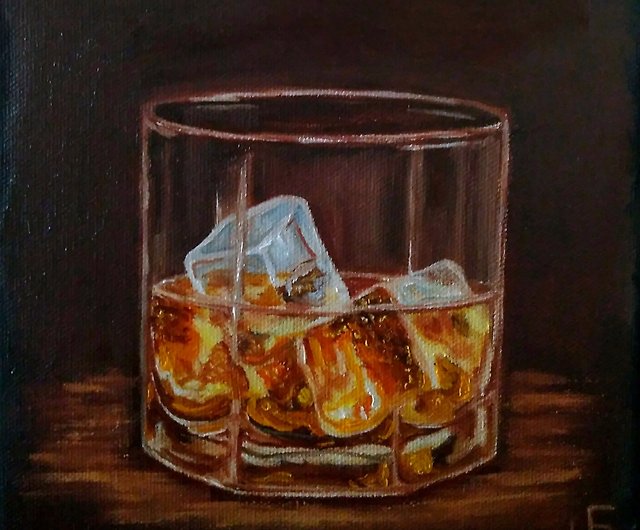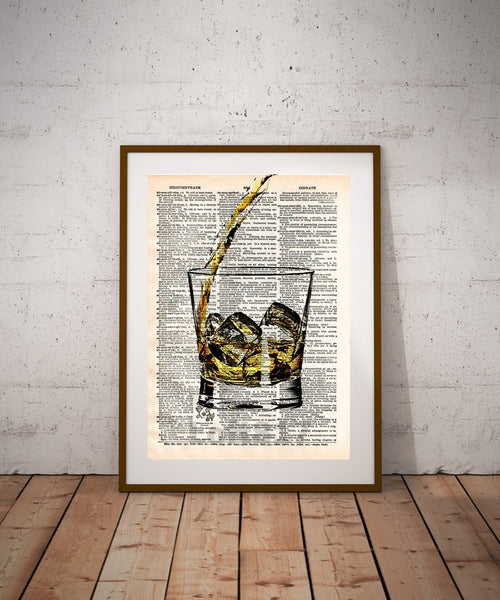The Allure of Realism Art: A Deep Dive into Whiskey's Rich Heritage
The Allure of Realism Art: A Deep Dive into Whiskey's Rich Heritage
Blog Article
The Relevance of Whiskey Art in Celebrating Heritage and Craftsmanship in the Beverage Industry
The elaborate partnership in between whiskey art and the party of heritage and craftsmanship within the drink market can not be overstated. Via attentively developed containers and labels, whiskey brands envelop their historic origins and the artisanal skills that specify their production methods.
The Historical Origins of Whiskey
At the heart of bourbon's allure exists a rich tapestry of historic origins that map back to ancient human beings. The origins of bourbon can be connected to the purification techniques of the Sumerians and Babylonians around 2000 BCE, where very early kinds of fermented grain drinks started to emerge. It was in the Middle Ages that the art of purification developed dramatically, particularly in Ireland and Scotland, leading to the development of bourbon as we know it today.
The term "whiskey" itself obtains from the Gaelic word "uisce beatha," meaning "water of life." This phrase highlights the social significance of whiskey in Celtic societies, where it was usually connected with rituals, events, and common bonding. By the 15th century, purification became a recognized craft within monastic neighborhoods, leading the means for the facility of lawful distilleries.
As profession paths increased, bourbon's appeal expanded, going beyond local boundaries and capturing the interest of connoisseurs worldwide. Limited Edition. This historic journey reflects not only the craftsmanship behind whiskey production but also its essential role in social and cultural contexts, noting it as a substantial drink throughout background
Artistic Expression in Branding
Scotch branding stands as an engaging crossway of creativity and commerce, where visual identity plays a vital role fit customer perception. The appearances of bourbon tags, packaging, and advertising products reflect not only the brand name's tale but also its core worths and heritage. With artistic expression, distilleries convey a narrative that resonates with customers, stimulating emotions and sparking links.
The use of shade, typography, and imagery in branding offers to set apart products in a saturated market. For instance, standard motifs might evoke a feeling of authenticity and workmanship, while modern layouts can represent innovation and forward-thinking. This strategic imaginative direction enhances brand name acknowledgment and loyalty, permitting customers to create a personal connection with the whiskey they select.
In addition, creative expression in branding usually functions as an event of regional heritage. Distilleries regularly include neighborhood symbols or historical references into their styles, producing a sense of location that invites consumers to take part in a broader social experience. Eventually, the virtuosity behind scotch branding not just improves visual appeal however additionally enhances the total narrative of the brand name, cultivating a much deeper appreciation for the craftsmanship and heritage embedded in each container.
Workmanship in Container Layout
The creativity noticeable in whiskey branding extends beyond visual identity to include the workmanship associated with container layout. Each container acts as a vessel not simply for the spirit within, yet also for the story it tells about its quality, tradition, and beginning. The layout process needs careful interest to detail, as elements such as closure, material, and shape add significantly to the total assumption of the bourbon.
Craftsmanship in bottle design involves picking high-quality glass that can boost the scotch's color and clarity, while additionally supplying a tactile experience for the consumer. The shape of the bottle should be both functional and cosmetically attractive, commonly reflecting the heritage of the brand name. Lots of distilleries choose unique forms or embossed logo designs that evoke a sense of credibility and history.
In addition, the label design and typography play a crucial duty in communicating the brand name's narrative. Realism Art. A well-crafted bottle not just mesmerizes the consumer's eye however also strengthens the brand's dedication to quality and custom. This way, the workmanship of bottle layout becomes an essential aspect of the bourbon experience, merging creativity with a profound respect for heritage
Social Importance of Bourbon Art
Celebrating custom and workmanship, the cultural value of bourbon art goes beyond plain appearances, intertwining with the historical and social stories of the regions from which it comes from. Each container works as a canvas, illustrating the unique stories, mythology, and practices that have shaped neighborhood whiskey-making practices. The elaborate styles often reflect the heritage of the distillers, integrating icons and concepts that resonate with the culture and values of their areas.

Furthermore, bourbon art plays a vital function in common gatherings and parties, functioning as a tangible web link in between individuals and their shared experiences. By appreciating the virtuosity anchor in bourbon product packaging, consumers cultivate a much deeper understanding and respect for the craft, eventually improving their enjoyment of the drink itself.
Modern Trends in Bourbon Presentation
In recent years, the discussion of whiskey has progressed to mirror contemporary preferences and fads while still honoring conventional workmanship - Bourbon Art. Distilleries are progressively concentrating on visual elements that improve the general alcohol consumption experience, connecting the gap between heritage and modernity
Ingenious container layouts have actually arised, frequently integrating lasting products and imaginative tags that inform engaging tales. Many brands now work together with regional artists, instilling their items with special aesthetic expressions that reverberate with customers. In addition, limited-edition launches are frequently packaged in collectible containers, adding value and appeal for connoisseurs.

Verdict
To conclude, scotch art acts as an essential conduit for expressing the heritage and craftsmanship integral in the beverage market. Via intricate branding, innovative container layouts, and culturally significant creative components, bourbon brand names effectively recognize their practices and attach with customers. This artistic narrative not only elevates the appreciation of whiskey but also strengthens neighborhood identity and pride among manufacturers. Eventually, whiskey art plays a vital function in preserving and celebrating the rich cultural tapestry of whiskey-making.


Workmanship in bottle style involves picking high-grade glass that can boost the scotch's color and quality, while likewise offering a tactile experience for the customer. In this method, the craftsmanship of container style becomes a vital facet of the scotch experience, merging virtuosity with an extensive respect for heritage.
In verdict, scotch art offers as a crucial conduit for sharing the heritage and craftsmanship inherent in the drink industry.
Report this page